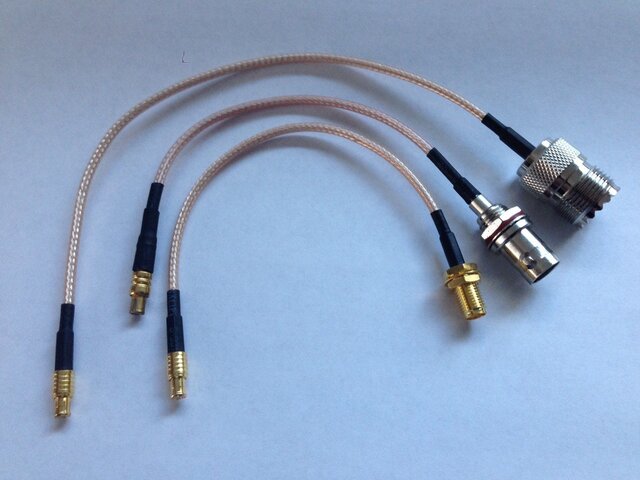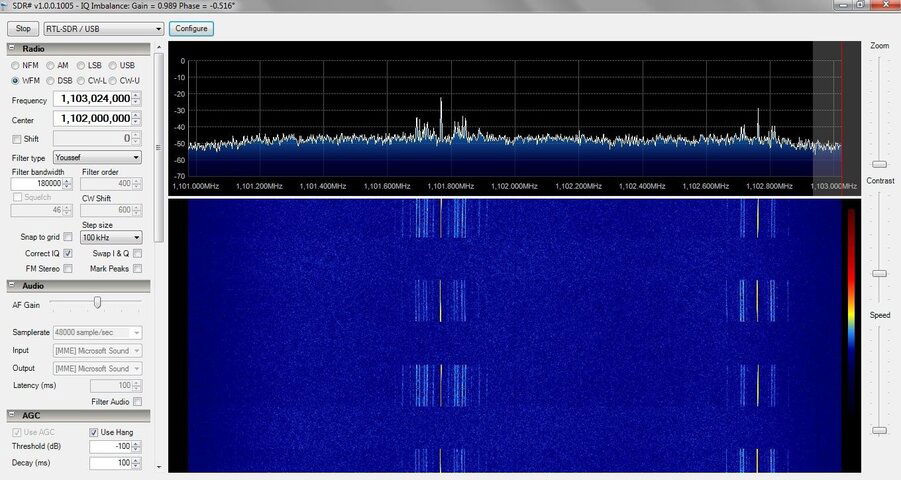Last night on the Satellite Radio show we had Brian from Titanium Satellite on the show and he talked about something I knew nothing about... but what he told us peaked my interest. And I had to get one...
So last night I ordered a Newsky USB SDR Receiver for under $20. (http://www.ebay.com/itm/160896092118?ssPageName=STRK:MEWNX:IT&_trksid=p3984.m1497.l2649)
On the show Brian explained how he was able to hook up from his satellite dish to this tiny USB stick and find loads of hidden signals coming off the satellites. He told us how amazed he was at what he heard. Michael (KE4EST) is also a user of this technology and him and Brian had an amazing discussion on this new technology.
I have found out that the majority of the software out there to make this work is freeware, and I also found out that you can create a simple server using an inexpensive Raspberry PI so that you can access your SDR receiver not only from anywhere in your house, but with a good internet connection from anywhere in the world.
They also explained using this technology how they were able to use it as a spectrum analyzer to better aim their dish.
I was amazed at what I heard, and since the show have spent many hours searching the internet learning more about this amazing technology! However in my travels I have not really found much in the way of using SDR with a satellite dish. About the closest I found was how to use the SDR receiver to download satellite weather maps from the weather satellites flying ahead. But from what Michael and Brian were talking about there seems to be a lot up there on the satellites.
I am guessing that there are others here on SatelliteGuys who have been using this amazing technology who would know more and would be willing to help others learn more about SDR and what it can do...
So how about it any other SatelliteGuys out there fool around with this amazingly low cost technology?
I would love to see discussion and tips of interfacing the SDR receiver with satellite technology. I do understand that "loose lips can sink ships" so I do think that we can talk about it but be careful when talking specifically about some of the hidden gems up there.
If we can get enough members talking about this and using this technology I have no problem opening up a dedicated SDR forum here at SatelliteGuys.
So last night I ordered a Newsky USB SDR Receiver for under $20. (http://www.ebay.com/itm/160896092118?ssPageName=STRK:MEWNX:IT&_trksid=p3984.m1497.l2649)
On the show Brian explained how he was able to hook up from his satellite dish to this tiny USB stick and find loads of hidden signals coming off the satellites. He told us how amazed he was at what he heard. Michael (KE4EST) is also a user of this technology and him and Brian had an amazing discussion on this new technology.
I have found out that the majority of the software out there to make this work is freeware, and I also found out that you can create a simple server using an inexpensive Raspberry PI so that you can access your SDR receiver not only from anywhere in your house, but with a good internet connection from anywhere in the world.
They also explained using this technology how they were able to use it as a spectrum analyzer to better aim their dish.
I was amazed at what I heard, and since the show have spent many hours searching the internet learning more about this amazing technology! However in my travels I have not really found much in the way of using SDR with a satellite dish. About the closest I found was how to use the SDR receiver to download satellite weather maps from the weather satellites flying ahead. But from what Michael and Brian were talking about there seems to be a lot up there on the satellites.
I am guessing that there are others here on SatelliteGuys who have been using this amazing technology who would know more and would be willing to help others learn more about SDR and what it can do...
So how about it any other SatelliteGuys out there fool around with this amazingly low cost technology?
I would love to see discussion and tips of interfacing the SDR receiver with satellite technology. I do understand that "loose lips can sink ships" so I do think that we can talk about it but be careful when talking specifically about some of the hidden gems up there.
If we can get enough members talking about this and using this technology I have no problem opening up a dedicated SDR forum here at SatelliteGuys.





